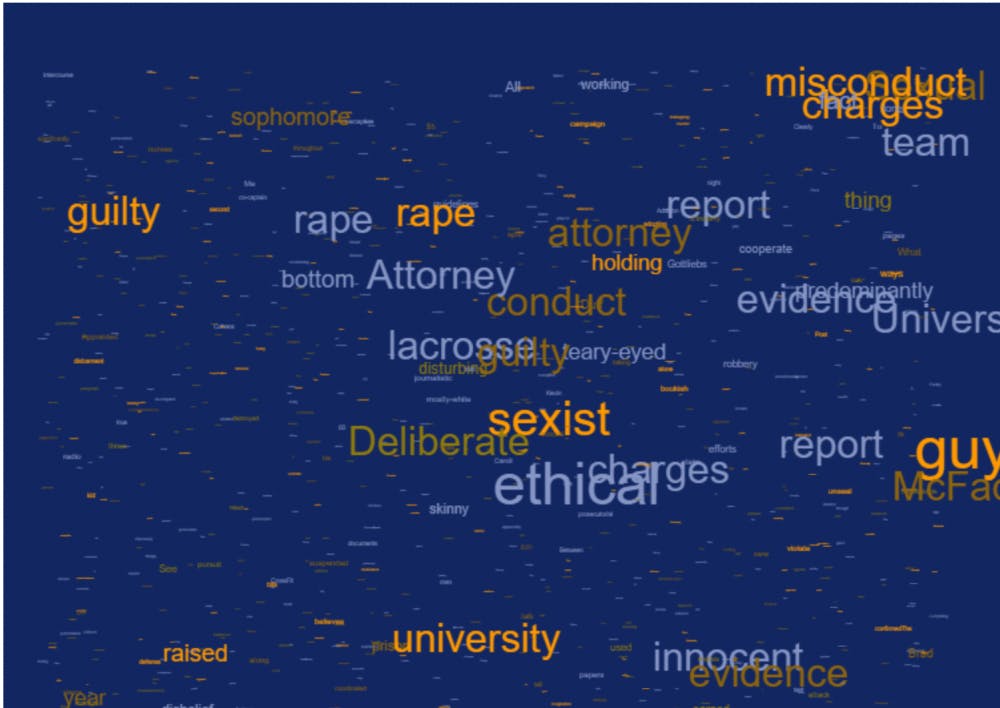This story is part of our coverage of the 10th anniversary of the lacrosse case. Our other coverage can be found here.
Much has been written about the lacrosse case. As the scandal unfolded, news organizations, political pundits, activists and Duke University itself released a deluge of news articles, opinion pieces, statements, comments and stories. This body of work provides a fascinating look at how the scandal was thought of and talked about. To provide an interesting and comprehensive way of looking at this information, we have put together visualizations that show the most common words used by Duke and by a selection of outside media sources.
These visualizations show the most common words used by Duke and by outside media when discussing the case. Words that were more commonly used are shown in larger type, while less common words are shown in smaller type. Words appear in the visualization in random order.
Duke University
Duke released dozens of statements from March 2006 to April 2007. The word choice in these statements is subdued, with words such as "woman" and "Brodhead" being among the most commonly used in statements by the University.
Outside media
Outside media sources adopted a harsher tone when discussing the scandal. Words such as "sexual" and "rape" were used more often in news and opinion articles.
John Burness, who was senior vice president for public affairs and government relations at the time of the incident, said that he felt media coverage of Duke and of the incident was unfair. He specifically said that The New York Times "set the bar so low for coverage." He added that Times editor Jill Abramson later apologized to him for the way that the Times handled the case.
Get The Chronicle straight to your inbox
Signup for our weekly newsletter. Cancel at any time.

